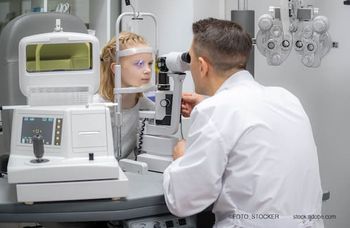
Replicated loci linked to primary open-angle glaucoma
Researchers have completed a genome scan of 128 families with primary open-angle glaucoma (POAG) and replicated loci on chromosomes 15 and 2. Nearly one-third of the families are of African-American or Ghanaian descent, a group disproportionately affected by POAG.
Keypoints:
Durham, NC-A collaborative group of researchers has recently completed a genomic linkage analysis for primary open-angle glaucoma (POAG) in a dataset that includes families of African-American and Ghanaian descent.
From this analysis, the researchers have identified two replicated loci, one on chromosome 15 and one on chromosome 2. Efforts to replicate linkages independently in different datasets should provide additional information about the genetics of POAG, which disproportionately affects individuals of West African descent, said Michael A. Hauser, PhD, associate professor, medical genetics section, Department of Medicine, and Department of Ophthalmology, Duke University, Durham, NC.
"I sincerely hope that we will be able to identify additional glaucoma susceptibility genes within these regions, because they are greatly needed to help improve patient care," Dr. Hauser said.
This strategy has been used effectively to identify genetic linkages for age-related macular degeneration (AMD), Dr. Hauser said, adding that it should be equally applicable to glaucoma.
"Multiple new genes have been identified for AMD, and I think one of the factors that really drove those discoveries was the fact that there were multiple genome scans in independent datasets. Most of those genome scans replicated two loci, one on chromosome 1 and one on chromosome 10," he said. "Subsequent work by a number of groups identified the complement factor H gene on chromosome 1 and the HTRA1/ LOC cluster on chromosome 10. With this in mind, certainly our feeling is that the search for POAG susceptibility genes should focus on loci that have been replicated in multiple independent datasets."
The recently completed linkage scan by the Duke team was performed by analyzing single nucleotide polymorphisms (SNPs) from 128 multiplex families, 37 of them African-American or Ghanaian and 91 Caucasian. More than 6,000 SNPs were genotyped before data cleaning, and 5,067 were used in the final analysis. The allele frequencies were similar in the African-American and Ghanaian individuals, so their results were combined during analysis.
The Duke researchers chose to conduct the joint analysis of the two sets of pedigrees because many of the African-American families in North Carolina, included in the Duke dataset, can trace their ancestry to West African locations near present-day Ghana. In addition, several controls have been conducted using Ghanaian allele frequencies in the analysis of the African-American frequencies and vice versa, and in all cases the linkages on chromosome 2 were robust.
Within their dataset of 128 families, the Duke researchers identified a subset of 30 with early adult-onset POAG. Researchers at the University of Michigan replicated this region on chromosome 15. Elsewhere, the Barbados Family Eye Study of 662 individuals in 103 families identified two regions of linkage, on chromosomes 2 and 10. Dr. Hauser and his group also found linkage on chromosome 2 in the 37 families they studied of African-American or Ghanaian descent; this linkage was very near the location identified in the Barbados study.
Diagnostic and analytic differences existed between the two studies, however. Diagnostic criteria used by the Duke group included elevated IOP (>22 mm Hg) in both eyes, visual field loss in at least one eye, and optic nerve damage in both eyes. The probands in each family needed to have all three of those cardinal signs, whereas additional affected individuals could have only two. In the Barbados study, IOP was not included as a diagnostic factor; only visual field loss and optic nerve damage were used.
The analysis conducted in the Duke study consisted solely of affected individuals. The Barbados researchers classified pedigrees as affected individuals and those with two grades of suspected glaucoma; all three of these plus unaffected individuals were included in the variable penetrance function.
"There were some substantial differences that may account for the slight displacement of our two loci," Dr. Hauser said. He added that the status of the individuals in the Duke study was being reclassified so that the two studies would be consistent and that comparable linkage analyses of the two datasets would be conducted to obtain a better comparison.
"It may also be necessary to genotype additional markers in both datasets to justify these two independent linkages fully," he said. Additional follow-up analysis will include conducting association mapping studies in African-American and Ghanaian case control datasets.
Newsletter
Don’t miss out—get Ophthalmology Times updates on the latest clinical advancements and expert interviews, straight to your inbox.


















































.png)


